 Long-tailed Hermit (Phaethornis superciliosus)
Long-tailed Hermit (Phaethornis superciliosus)
 Long-tailed Hermit (Phaethornis superciliosus)
Long-tailed Hermit (Phaethornis superciliosus) |
 |
| Pictures (click on them to enlarge) | ||
|---|---|---|
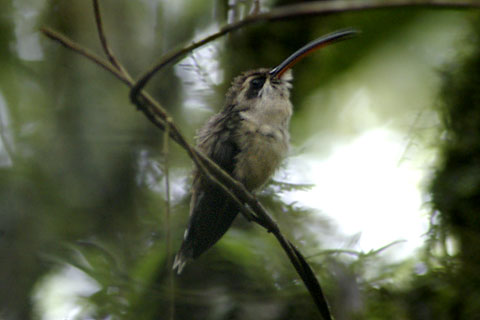 © N. Takano | 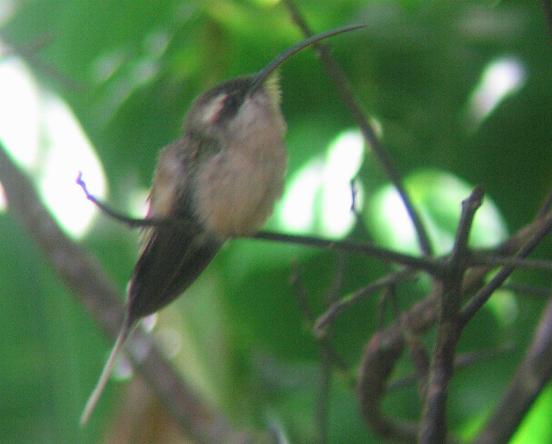 © Steven Wytema | 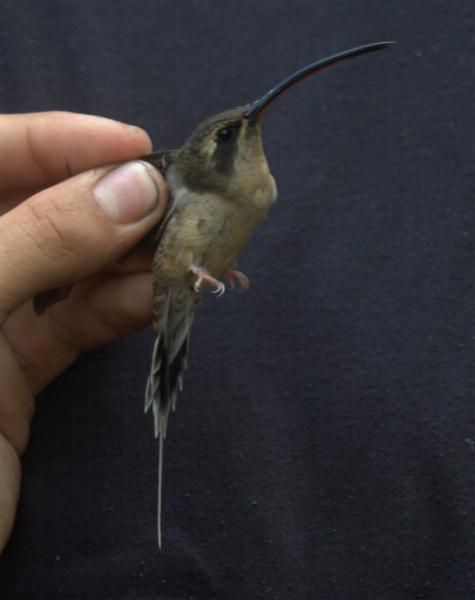 © John Mittermeier |
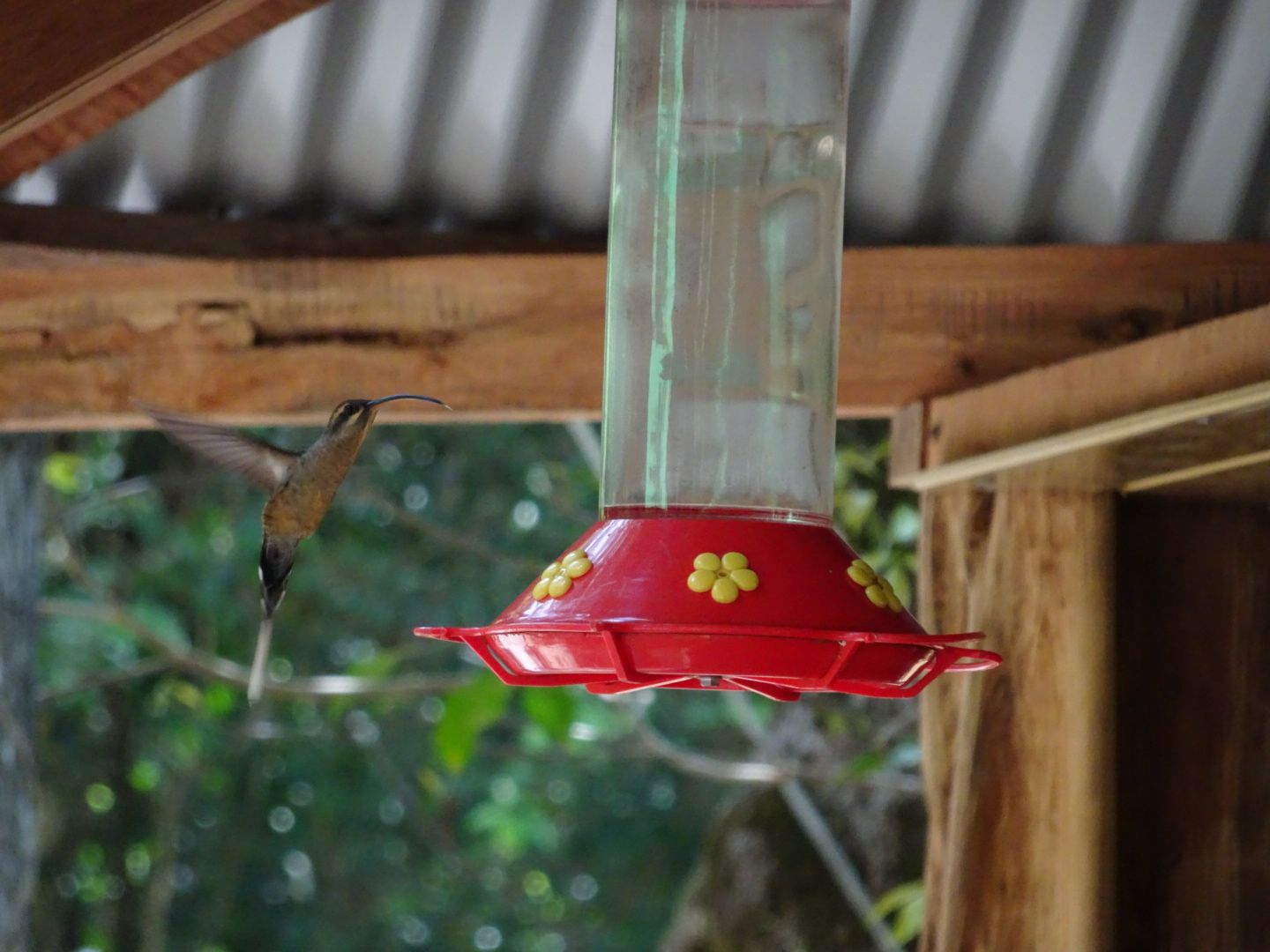 © Frank Valk | 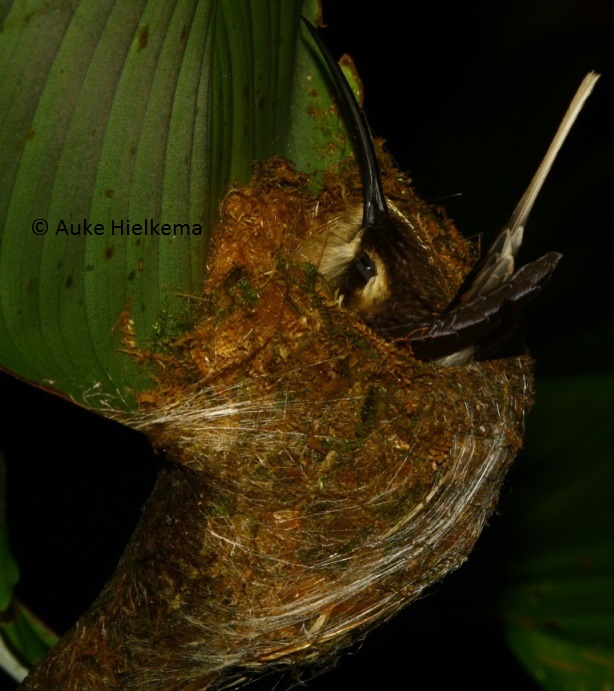 nest on Brownsberg © Auke Hielkema | 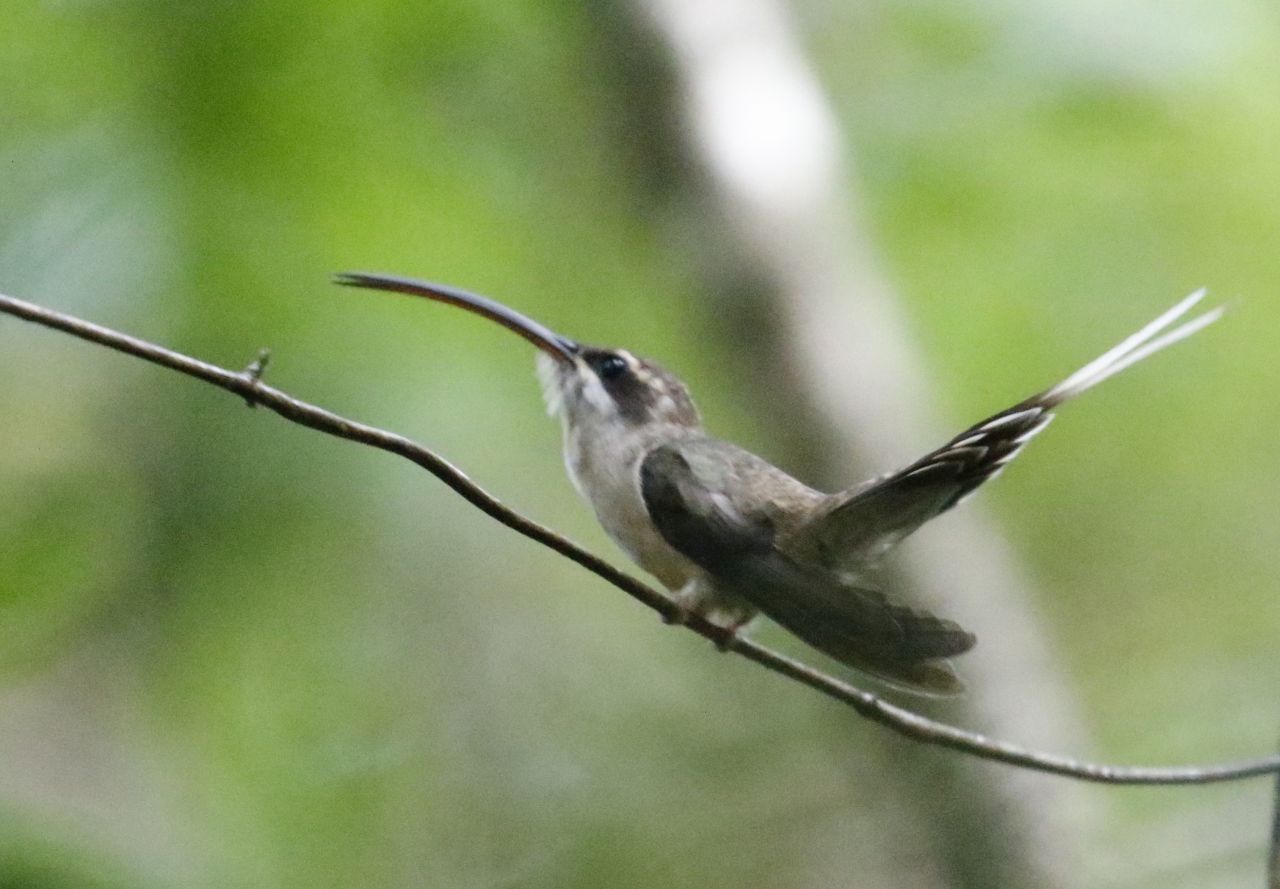 © Klaas de Jong |
| The Long-tailed hermit is a very common sight in the forest , it goes quickly from flower to flower, often low in the forest along a path. And it will often hang still in the air and have a look at the people that walk there. Sometimes you come across a group practising "communal singing". The "leks" where this is practiced, stay on the same places for years. A well known lek is just along a broad path on the Brownsberg. The singing will lead you it. Photo of an Eastern Long-tailed Hermit (with an abnormal short tail) made by N. Takano on the Brownsberg in August 2004. At the same place Steven Wytema saw the bird of the second photo in May 2005. For research purposes John Mittermeier trapped the bird below that, on the Sipaliwini savanna (and released it). A Long-tailed Hermit sings/calls in a video made by Dominiek Plouvier. |
| Video (click the link or the 'play'-button to see) | ||
|---|---|---|
| Video recording of a Long-tailed Hermit © ; |
|
|
||||||||||||||||||||||||||||||||||||||||||||
| Observations through the year | Observations of breeding through the year |
|---|---|
| The 415 reported observations of this bird in Suriname, mainly for the last 50 years up to 2018, have been grouped by month. More birds on one day are counted as one observation. Of course, if the graph should depict the total number of birds seen, the differences between the months could be much more pronounced. | The 2 reported breeding observations of this bird in Suriname. Most observations are about nest with eggs, some about fledglings, or feeding at a nest or the building of a nest. Of the about 5000 nests and eggs found for all species together, about 1/3 comes from the egg collection of Penard between 1896 and 1905. For some reason most collecting then was done in the first half of each year, so the shown distribution does not necessarily reflect the actual breeding preferences. The main dry season in Suriname is reckoned to be from half August to the end of November, the main wet season from half April to half August, but the the timing of begin and end does vary from year to year. Around March a second dry season often occurs. |